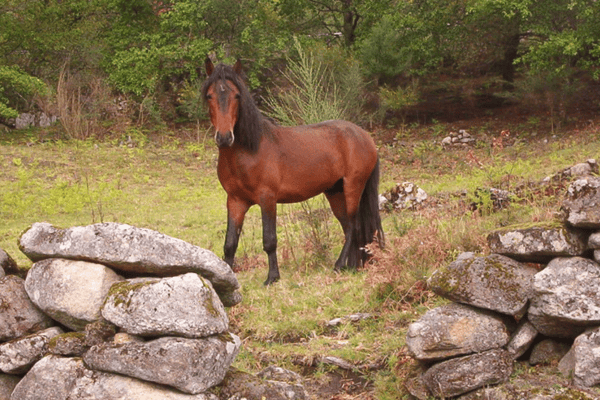The Garrano, an exquisite and relatively uncommon breed within the Iberian horse family, hails from the verdant landscapes of northern Portugal. Deriving its name from the Gaelic ‘gearran’, this pony breed is recognized for its long-standing role as a versatile workhorse, adept in tasks ranging from transportation to light farm duties.
As one of the ancient horse breeds, the Garrano’s lineage has withstood the test of time, preserving its distinct characteristics across thousands of years. However, in contemporary times, this noble breed faces the threat of decline, attributed to factors such as increased predation and a diminishing interest in its breeding for agricultural purposes.
History:
The Garrano horse breed, an iconic symbol of Iberian Peninsula history, boasts an ancient pedigree dating back to northern Portugal’s Ancient Bronze Age. Their presence can be seen clearly documented in Paleolithic cave paintings from Northern Iberia where depictions of equine figures resemble modern Garrano horses strikingly; suggesting they had maintained their conformation across time.
Researching the genetic ancestry of Garrano horses reveals their Celtic origins, with further investigation revealing deliberate introduction of Northern European male horses into breeding lines to add diversity to both genetic makeup and breed development – contributing both to new breeds such as Galica Mountain Ponies produced through interbreeding with Andalusians brought by Spanish conquistadors and native Sorraias, but also aiding native horse populations such as Sorraias in Argentina.
In the 20th century, the Garrano breed experienced another substantial genetic exchange with Arabian horses that subtly enhanced its characteristics while simultaneously retaining many of its intrinsic ones.
However, survival of the Garrano has been threatened by both natural and human-caused factors. Predatory pressure from predators such as wolves has significantly diminished their numbers, leaving them as an easily targeted species in their ecosystem. Furthermore, as agricultural practices favored mechanization over animal labor have reduced selective breeding for farming purposes which has diminished selective breeding for Garranos used in farms; leading to some being crossbred with meat production breeds instead.


As of early 21st century, Garrano population estimates were cause for alarm; they estimated around 2,000 horses with an skewed gender ratio heavily favored mares. This demographic depiction illustrates a breed at crossroads that requires immediate protection measures to preserve its rich heritage and secure its future.
Characteristics of Garrano Horses:
This distinctive Iberian breed displays an array of distinctive physical traits that help define its individual identity. From bay, brown and dark chestnut hues to subtly concave or straight facial profiles and signature charm and elegance; its visual presence cannot be overlooked.
Garranos stand an average height of approximately 1.3 meters or 12.3 hands (51 inches), making them well suited to their native landscapes. Renowned for their hardiness, this breed has endured through centuries of adaptation to various terrains of Iberian Peninsula through centuries.
Garranos are known for their physical resilience as well as their quick and agile gait. Once used to showcase the breed in racing events, this characteristic makes the Garrano an adept horse for various equestrian pursuits today.
Temperament and Adaptability:
Garranos are well known for their hardiness and adaptability, and can thrive even in harsh environments, making them perfect for living in mountainous regions of Portugal and Spain. Although small in size, their strength makes them suitable for numerous equestrian activities.
Conservation and Contemporary Roles:
Recent years have brought greater awareness of the need to conserve this unique breed. Conservation efforts are under way in order to maintain population and genetic diversity of these horses, which serve not only as symbols of cultural heritage but also play a significant role in ecological projects such as landscape management and fire prevention through their grazing habits.


Garrano in Culture and Tourism:
The Garrano pony is more than just an animal of use – it represents cultural identity for an entire region. Festivities and events hosted in its honor highlight their special place within local communities and further highlight how integral they are to ecotourism in Iberian Peninsula regions.

